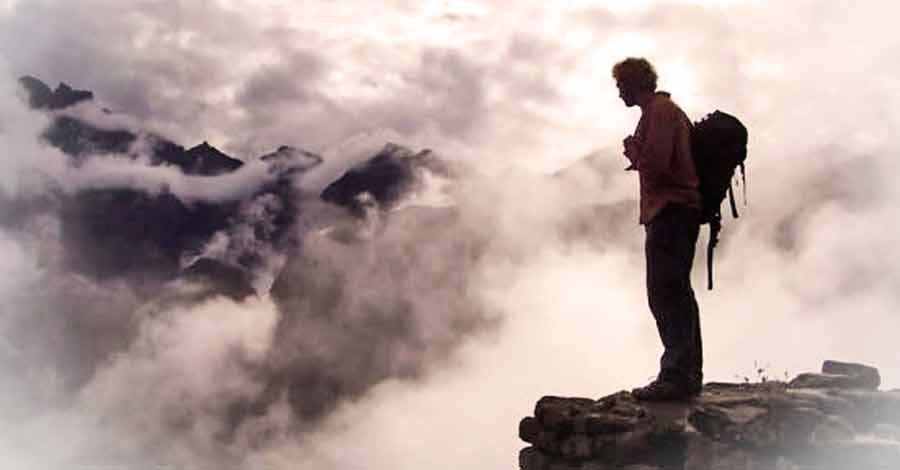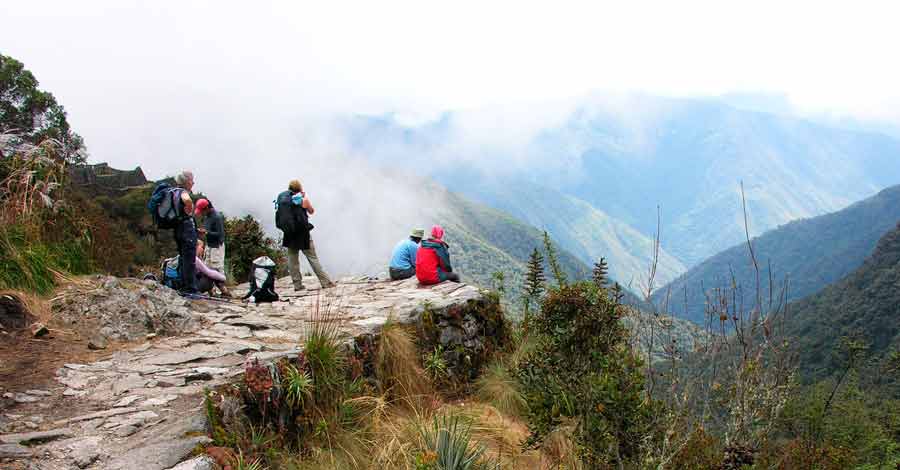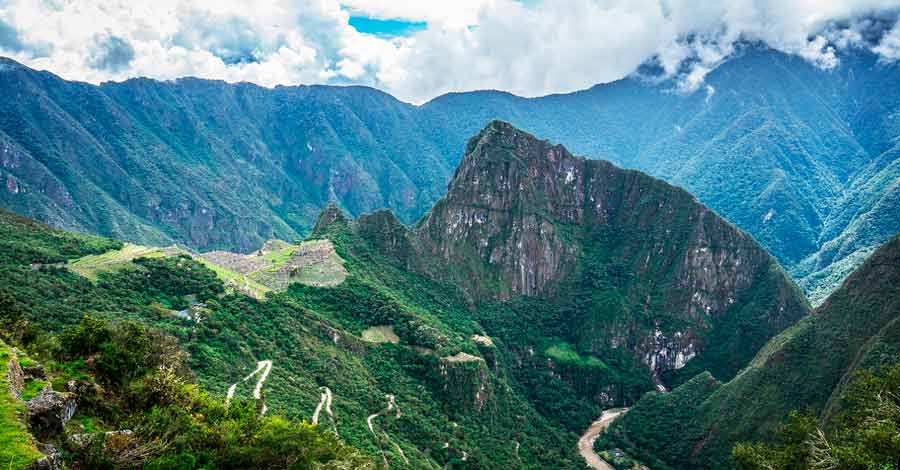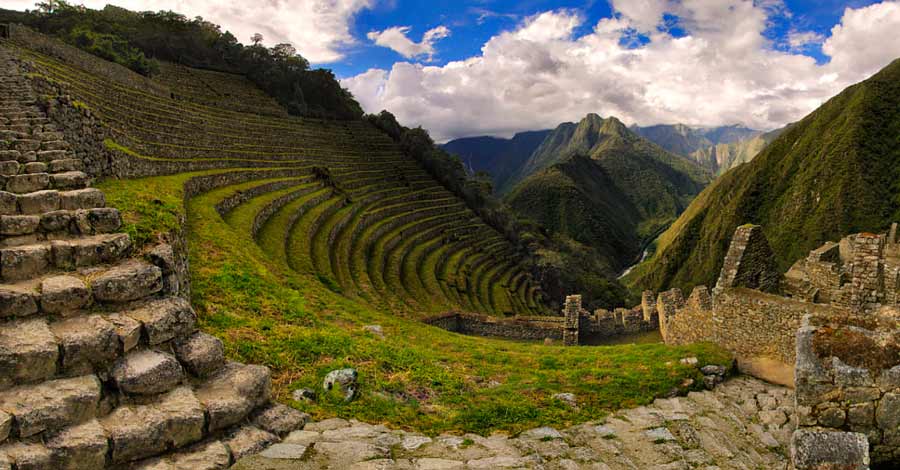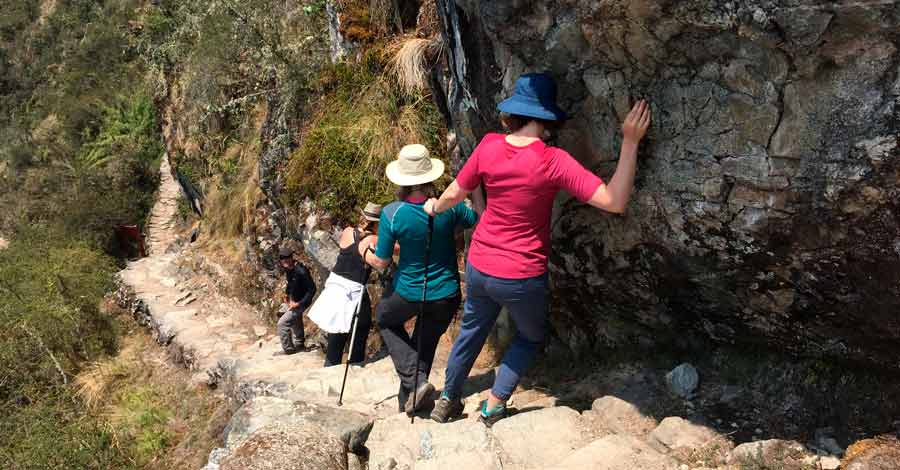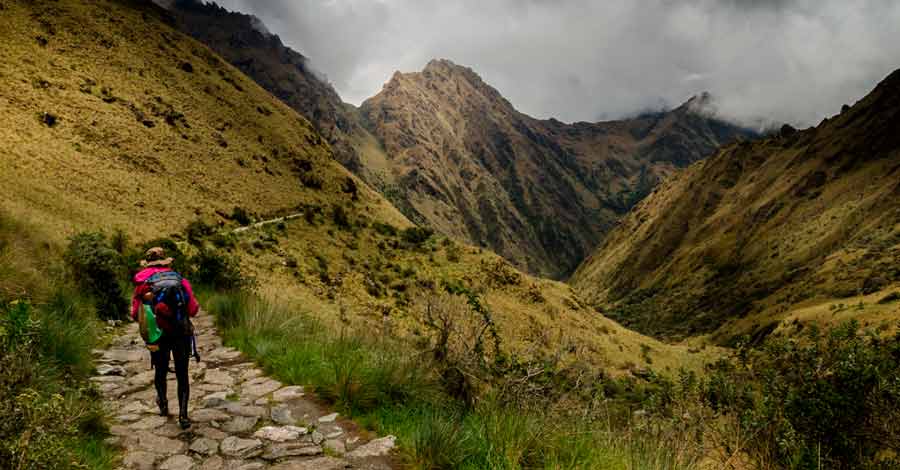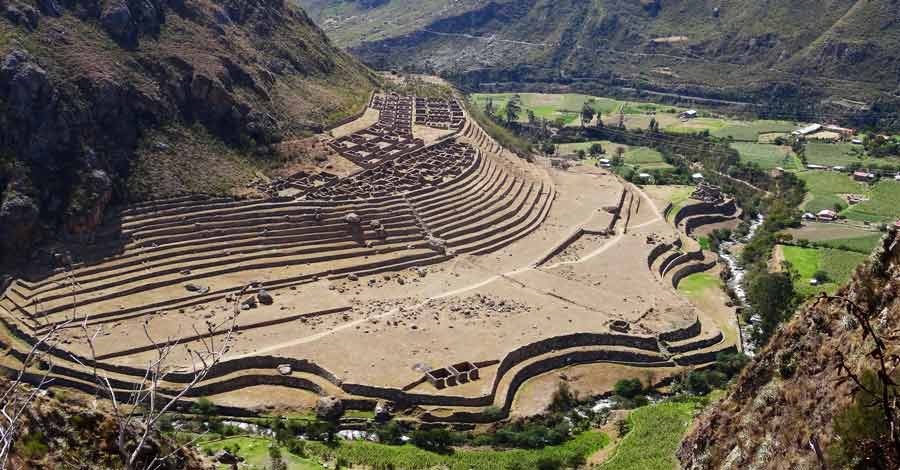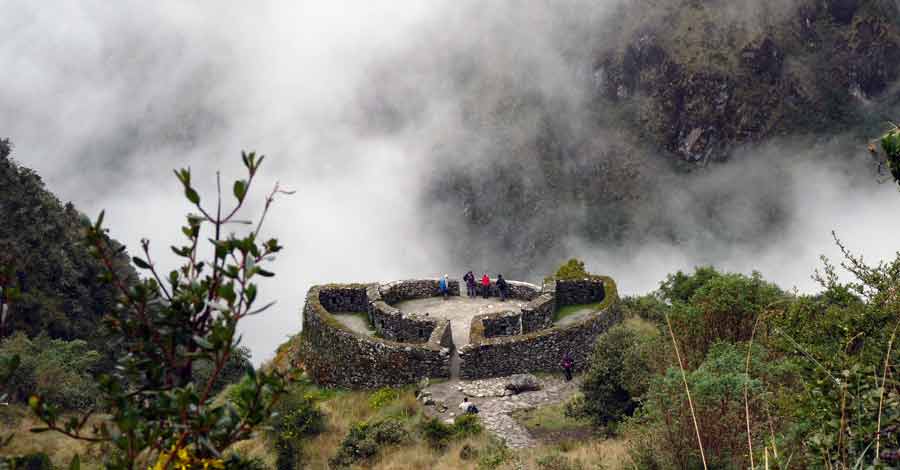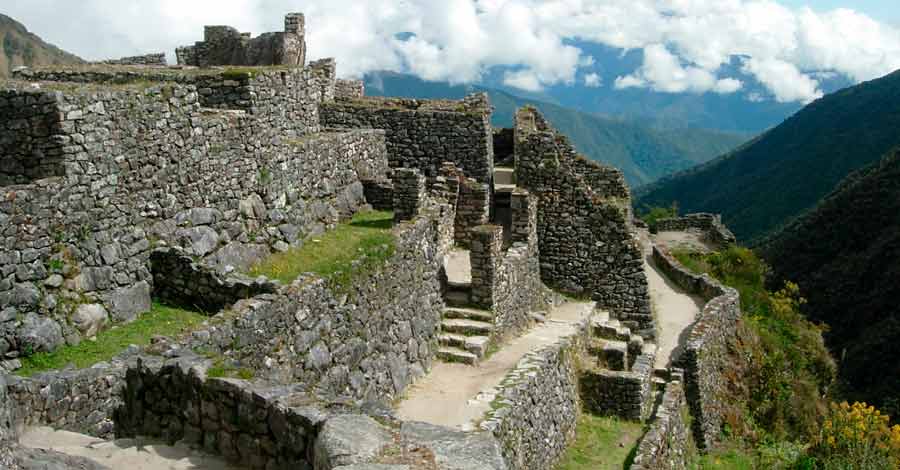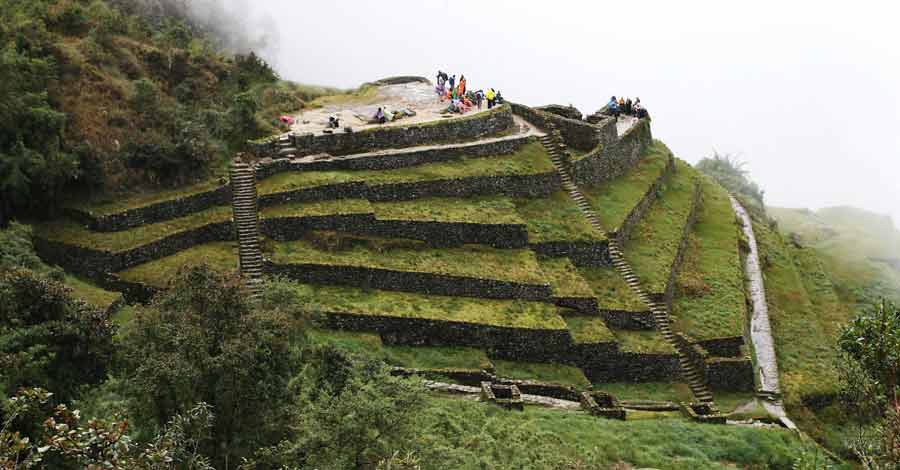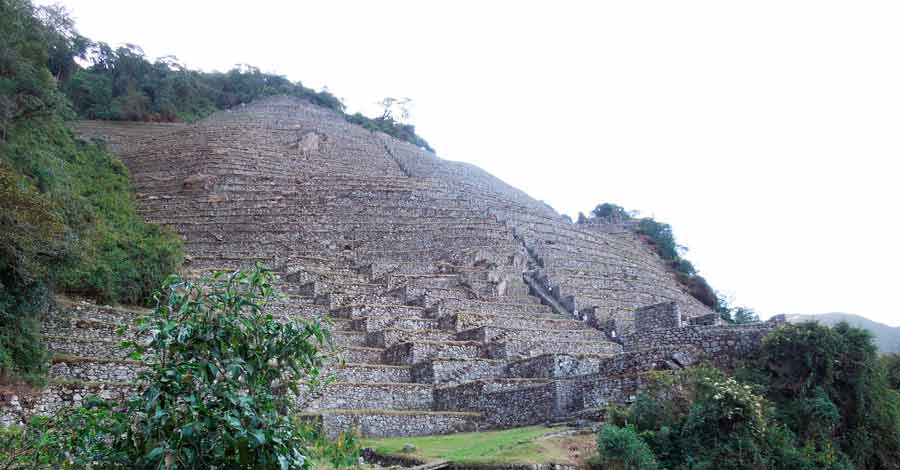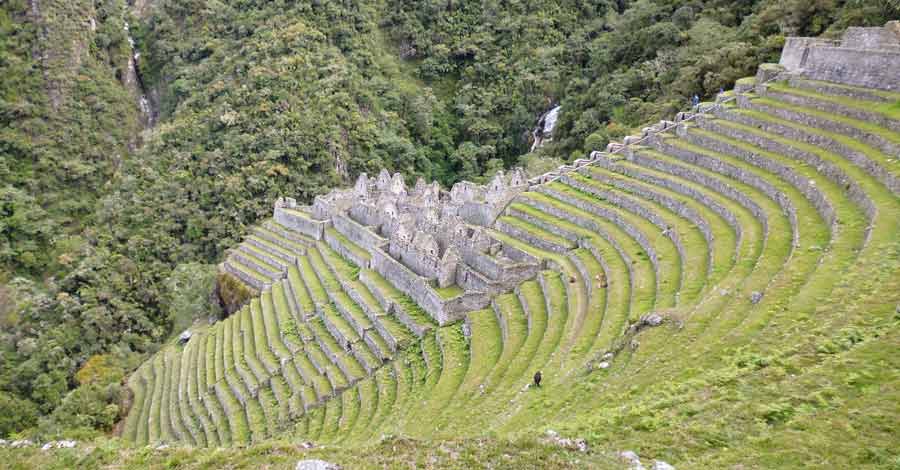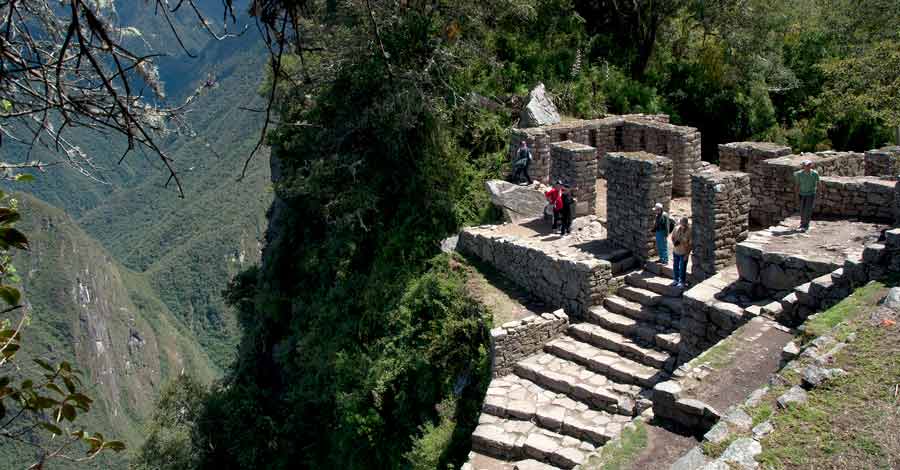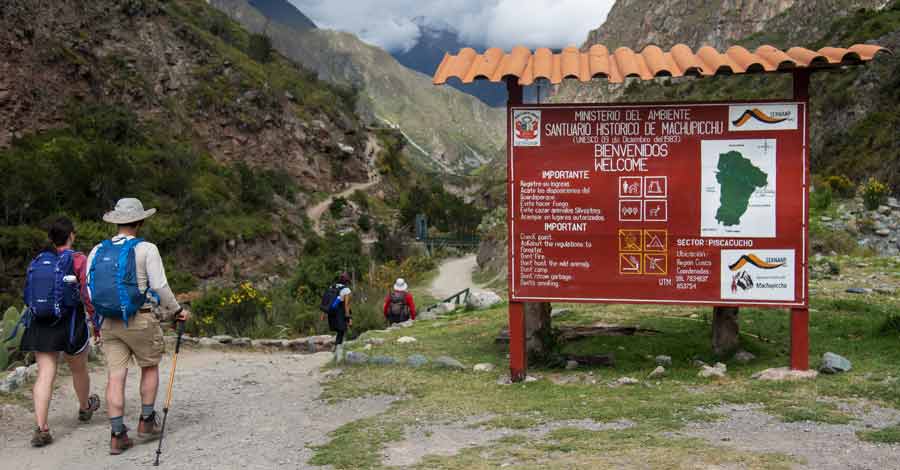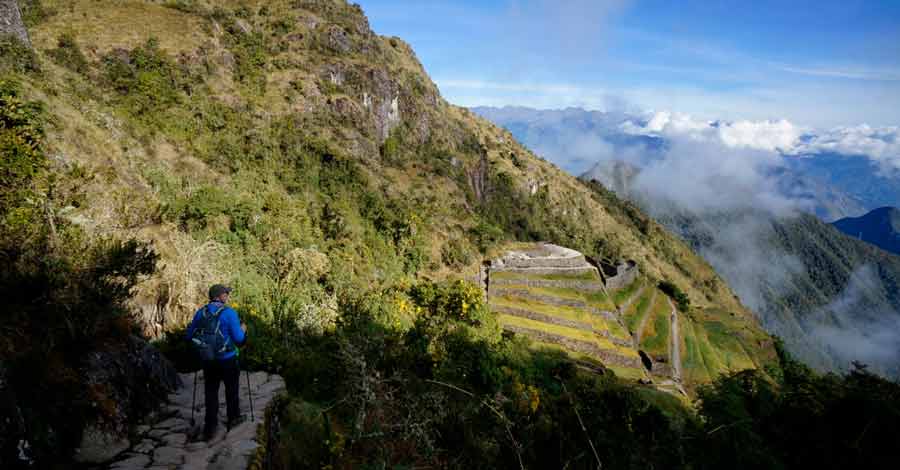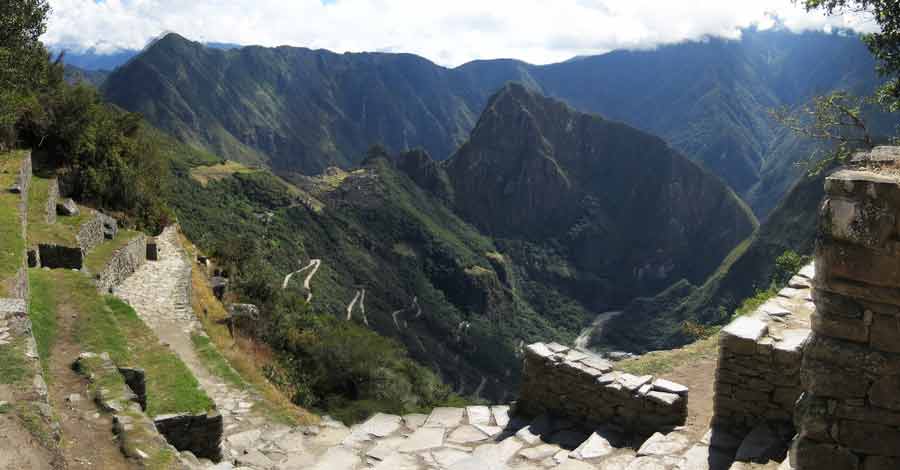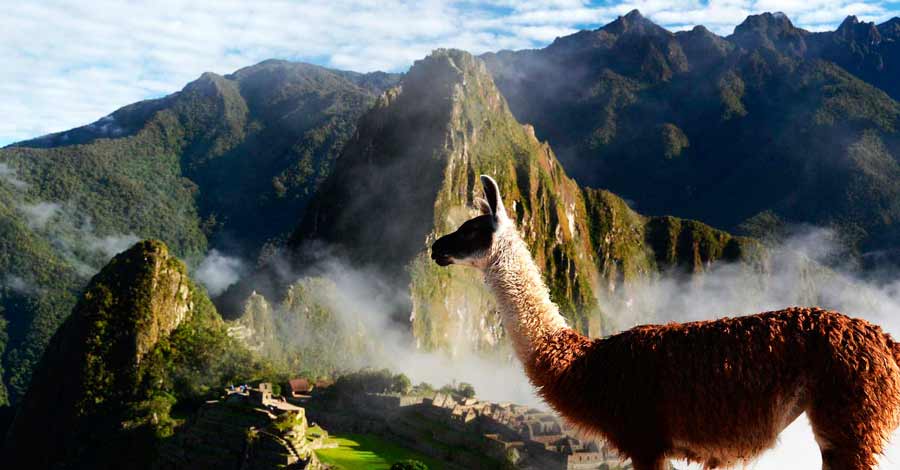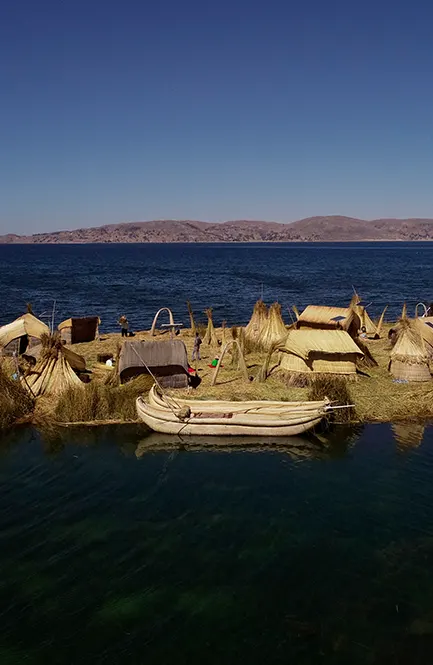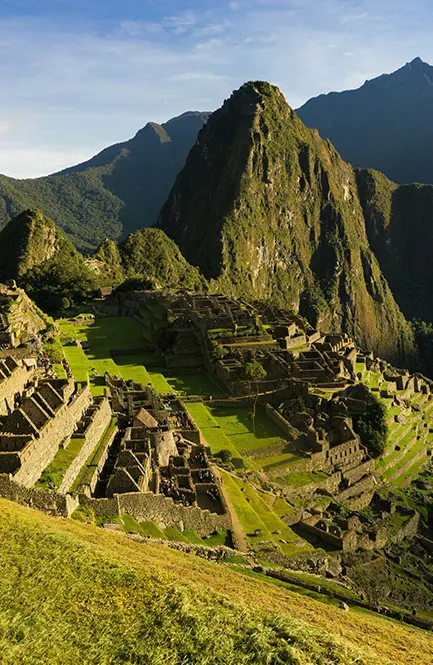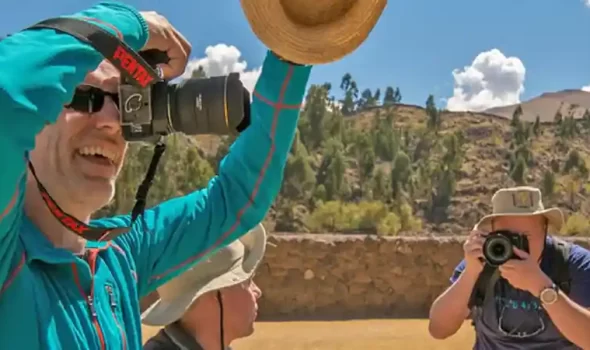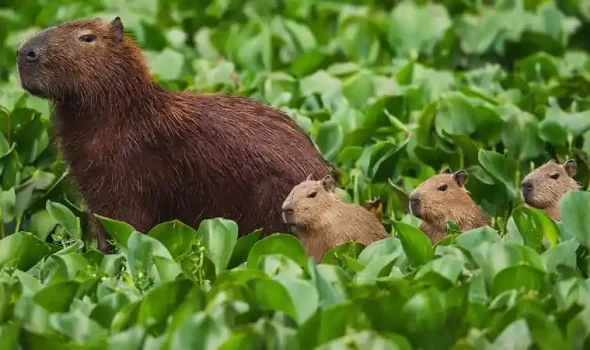The Inca Trail to Machu Picchu is ranked as one of the best trekking routes worldwide by international publications specializing in travel and tourism, such as National Geographic, Lovely Planet and the British magazine Wanderlust, the Inca Trail Network culminates the amazing experience of the journey with the arrival at Machu Picchu, a Mixed World Heritage Site and one of the seven new wonders of the modern world.
The experience of trekking the Inca Trail to Machu Picchu not only seduces lovers of nature tourism, culture or history, but also lovers of adventure and spirituality. In this post, Auri presents many of the facts, details, locations and the information you need to know about the most famous Machu Picchu hike.
What is the Inca Trail to Machu Picchu?
The Inca Trail to Machu Picchu is the most beautiful and best-preserved section of what was once the great Inca trail network of Qhapac Ñan, a 30 thousand kilometers (18, 641 miles) network of roads that crossed Colombia, Ecuador, Peru, Bolivia, Chile and Argentina.
The most popular version of the Inca Trail to Machu Picchu is the so-called Classic Inca Trail, a route that takes 4 days and 3 nights. There is a long version of 5 days and a much shorter version of 2 days. There are also trekking routes that connect with the Inca Trail, for example, the one that crosses the snowy Salkantay (Salkantay trek), the route of Cacchicata (Inca Quarry), the route that comes from Lares Trek or many other options and versions that are combined with beautiful hikes through the Andes and the jungle.
In addition, the Inca Trail to Machu Picchu is one of the most famous and widely requested routes on travel platforms such as TripAdvisor, Tour Radar, GetYourGuide, etc.
Where is the Inca Trail?
The Inca Trail to Machu Picchu is located in Peru, within the Cusco region between kilometers 82 and 110 of the Cusco – Machu Picchu railway and in the district of Urubamba. The Inca Trail is located on the right bank of the Urubamba River in the Vilcanota mountain range.
How long is the Inca Trail?
The Inca Trail to Machu Picchu has a length of 33 kilometers and runs through a series of places of captivating scenic beauty, diverse ecological levels, impressive archaeological sites that are contemplated along with a great biodiversity of fauna and flora, in many cases unique on the planet.
Why is the Inca Trail so popular?
The Inca Trail is Peru in a microcosm of culture, history and nature. Beautiful mountain passes, lush green cloud forest replete with birds, snow-capped Andean peaks, beautiful stone roads, Inca sites that seem frozen in time, and much more. All these elements are there, accessible only to those who accept the challenge of traveling a stretch of what was once part of a trail network of more than 30,000 kilometers.
However, aside from the great scenic, historical and archaeological beauty, the real reason for the popularity of the Inca Trail lies at the end of the route, after crossing Intipunku (the sun gate) one encounters a beautiful view of the final destination, Machu Picchu.
The Inca trail and the Qhapac Ñan
The Inca Trail was a meticulously formulated route that formed part of the Qhapac Ñan. This section of the Inca Trail to Machu Picchu was part of an extensive network that linked all corners of the Inca empire (a vast network of roads of more than 30,000 kilometers). Clearly, the flow of information was a crucial factor in the development of the site, confirming that it originally served as an administrative complex, even though some authors affirm that it was one of the residences or palaces of Pachacutec Inca.
How the Inca Trail was built?
During the construction of this route, the Incas were forced to confront innumerable obstacles unique to the varied landscapes into which they ventured. Among many other factors were heavy seasonal rains, landslides, freezing conditions in the high Andean zone, and the year-round humidity of the rainforest. They also struggled with steep slopes, narrow passes and other challenging topographical features.
These obstacles were overcome by the use of drainage ditches, bridges, firm foundations and solid pavements. Vestiges of which have survived as a testimony to the engineering skill of the Inca road builders, whose expertise is splendidly displayed in this short but famous stretch of the great Qhapac Ñan. Probably, this section of the great Qhapac Ñan, known today as the Inca Trail to Machu Picchu, was built in the 15th century.
How many days Inca Trail should take?
The Inca Trail has three main versions in its duration. The most known and recommended is the Classic Inca Trail of 4 days and 3 nights. There is also a more extended version of 5 days and 4 nights to enjoy more quietly these beautiful trails through the mountains. Both versions of the Inca Trail start at kilometer 82 of the Cusco – Machu Picchu railway, in the town of Piscacucho and on the left bank of the Urubamba River.
On the other hand, there is a version of only 2 days and 1 night, which covers the last stretch of the Inca Trail to Machu Picchu, crossing the area of Wiñay Huayna and Intipunku before arriving at Machu Picchu.
On the other hand, Inca Trail can be included in tourist packages of all types, being combined with other trekking routes such as Salkantay trek, Lares trek, Inca Quarry, Rainbow Mountain, Ausangate Trek, and many other treks within the Inca region of Cusco.
What to do on the Inca Trail?
A considerable number of Inca archaeological sites can be observed by those who follow the course of the Urubamba (Vilcanota) river. On the right bank of the river, a total of twenty-nine archaeological Inca sites have been recorded, while on the left bank a further thirteen sites have been studied. The overwhelming majority of these sites were made known by Hiram Bingham. The main sites to be visited and explored during the Inca Trail route are the following:
Llactapata or Patallacta
This site was built at an altitude of 2300 meters and is arranged across three strips of land which lie at the base of a hill and together form a wide terrace. The complex is divided into three sectors: the urban sector, the agricultural sector and the ceremonial sector. This complex called Llactapata is also known as Patallacta, a Quechua word that means “place where a community is located”.
Huayllabamba
This site is known as Huayllabamba or Patawasi. It’s ovoid in shape and composed of two platforms upon which rectangular buildings originally stood. The remaining terraces can be distinguished, as well as desecrated tombs and ancient aqueducts still used by local people.
Runkuracay
Runkuracay is a round structure, set upon a platform to which a rectangular chamber has been added on the southeastern edge. Curiously, the Quechua name “Runkuracay” can be translated as “egg-shaped storehouse”. This site is situated at an altitude of 3600 meters and its overall shape has inspired interpretations associated with the worship of water.
Sayacmarca
Sayaqmarca means “starting settlement” or “dominant settlement”. This Inca site has an elongated form and was built using stone and mud mortar. It is surrounded by plunging precipices and protected by a circuit wall. The site was originally accessed via a long stone stairway leading to a plaza adjoining an ovoid area that was walled and fitted with windows, between which niches were set into the stonework.
Puyupatamarca
It is an imposing group of structures situated at the head of a pass, some five kilometers from Sayaqmarca. Phuyupatamarca means “settlement above the clouds” in reference to its location 3550 meters above sea level, in a depression where clouds tend to gather around and below this Inca site rather than being dispersed by the wind.
The site is composed of a series of platforms which together form a kind stepped pyramid, upon which curvilinear and concentric agricultural terraces were built, as well as groups of dwellings, a series of six liturgical fountains, stairways, water channels and courtyards. The entire complex was constructed using white granite.
Intipata
Intipata is translated as “where the sun goes down”. This Inca complex is situated at an altitude of 2900 meters, around seven kilometers away from Machu Picchu. Intipata contains forty-eight terraces, four stairways and twenty-three buildings fitted with niches and doorways topped with monolithic lintels. The site’s convex terraces are remarkable for their steeply banked form, dictated by the slope of the hill upon which they were built.
Wiñay Huayna
The archaeological site of Wiñay Huayna is located at an altitude of 2690 meters, at kilometer 104 of the Cusco – Machu Picchu railways. The famous Julio C. Tello, the father of Peruvian archaeology, was the one who named this Inca site as Wiñay Huayna, which means “forever young”.
The site is composed of an upper urban sector, with a much larger agricultural sector located below it. This lower sector is composed of broad, concave agricultural terraces which take up almost the entire area of the site, forming a whole that resembles a vast amphitheater, opening out onto the valley below and creating an architecturally harmonious effect that can be viewed as an antechamber to Machu Picchu.
Intipunku
Intipunku or “Sun Gate” is a kind of viewpoint situated in the ridge overlooking the final descent into Machu Picchu. Here, the Incas built a small rectangular platform, ringed by a wall with windows facing towards the entrance and exit, and fitted with niches on the interior surface.
This was the last control point for ancient travelers arriving at Machu Picchu. Today, it is from this point that modern Inca Trail travelers gain their first view of Machu Picchu, which lies below, just one kilometer away.
Classic Inca Trail itinerary
DAY 1: Cusco – Piskacucho (KM 82) – Llactapata Ayapata
Your first day trekking the renowned Inca Trail to Machu Picchu
A representative from Auri Peru will pick you up between 04:30 – 05:00 am. You will be transferred to Km 82, where you arrive at 07:00 am. After a delicious breakfast, we will start our adventure by going to the first checkpoint to actually start the trek (to enter the Inca Trail it is necessary to have your original passport, please make sure you have it before starting the trekking). The first hours of this trekking are easy.
Patallacta is a typical ancient Inca checkpoint approaching Machu Picchu. After arriving to Patallacta the trekking continues for another 2 hours. Then we really deserve to have our lunch. After lunch we will hike for another 2½ hours until we reach the first night’s campsite at Ayapata (3300 meters). On this last stretch we pass through 2 small communities. If you want to buy any energy drinks or snacks you can do so here. You can buy any essential items such as batteries, as well. We will arrive to our campsite at 17:00 pm and after settling in for a bit you can relax and have a hot drink and snack with your team of porters, chef and guide. By 19:30 pm your dinner will be ready and afterwards you can get some well-deserved rest.
Overnight at campsite.
Day 2: Ayapata – Dead Woman’s Pass – Runcuraccay Pass – Chaquiccocha
Feel the unique conecction with the enviromment at the Dead Woman’s pass!
This is the longest day during the trekking and we will start with an early breakfast and a coca tea. The trekking is hard along the way for around 4 hours. We will pass the Dead Woman’s Pass (4215 meters). On reaching the pass we will stop for a short break to enjoy the views before setting off again to descend to the next valley (Pacaymayu Valley – Hidden River).
It’s another hour and a half down the side of the valley to our lunch spot and a chance to refill our water bottles. After lunch we begin ascending again to the second pass of the trek. It is 2 hours to the pass and along the way we will stop at a small Inca site (Runcu Raccay) and see two huge waterfalls cascading down the opposite side of the valley. After the second pass it is another hour downhill hike to reach the magnificent Inca site Sayacmarca (an otherwise inaccessible village).
We will stop here to have a break and go for a quick tour through the site and then watch the sunset over the Vilcabamba mountain range. Now there are only just another 20 minutes missing until we stop for the night at our second campsite Chaquicocha (Dry Lake, 3600 meters). If you are not too exhausted, we can do some star gazing after dinner so that you can learn about the fascinating Inca constellations. In the magnificent Southern Hemisphere sky, away from all the artificial lighting, this sky is something to behold!
Overnight at campsite.
Day 3: Chaquiccocha – Wiñay Wayna Camp
Enjoy your third day passing through lovely Andean Landscapes!
Along the way, you will pass through the most beautiful landscapes of the whole Inca Trail. We wake up at 06:30 am in the morning, to soon start the hike for this day for around 2 hours. Arriving to the “Inca flat” we begin to enter the jungle known as the Cloud Forest. As we walk we will have the chance to see the majesty of the Salkantay, one of the highest mountains around with incredible beauty. Also, we can enjoy the fantastic panoramic view of the Vilcabamba mountain range. Then we arrive to the last peak at Phuyupatamarka (3600 meters) from where we will enjoy unique views overlooking the Urubamba River. Down the valley, we get our first look at Machu Picchu Mountain, but the site itself is still hidden from our eyes. Arriving at Phuyupatamarka it is only a 3-hour walk down a flight of steps to our last campsite, close to Wiñay Wayna (Forever Young). Wiñay Wayna is the most spectacular Inca site on the trail after Machu Picchu and also the most popular campsite, because of its proximity to Machu Picchu.
During the descent, we visit 2 Inca ruins, Phuyupatamarka (Town in the Clouds) and Intipata (Terraces of the Sun). The estimated time to arrive at our campsite is around 13:00 pm to have lunch and then relax the whole afternoon so that you are full of energy and ready for your final day at Machu Picchu. Approximately at 16:30 pm, your tour guide will give you a short orientation and you will visit the Inca ruins of Wiñay Wayna, where you are going to spend about an hour and a half. We will explain the significance of the site and combine all the information given during the trek so that you are fully prepared for your visit to Machu Picchu the next morning.
Today is our last feast and we would like to share it with the porters and chefs. It is a tradition to organize a ceremony in the evening to introduce the team to the tourists once again and to thank them for the great job done (if you wish to provide tips for them then you can do so at this time). It is recommended to sleep early to go up to Machupicchu the next morning and enjoy the sunrise.
Overnight at campsite.
Day 4: Machu Picchu Citadel – Aguas Calientes – Ollantaytambo – Cusco
Explore the Ancient Machu Picchu Citadel along your expert guide!
We will get up early in the morning at 03:30 am and breakfast is ready at 4:00 am. Then we start the trekking because the sun gate opens at 05:30 am. We will wave goodbye to our team of porters and chef and later we will arrive at the Sun Gate (Inti Punku). In this place, we have majestic views of the mountains and Machu Picchu. Until 06:30 am we will be at the Sun Gate and then it is just an hour trek downstairs to get into Machu Picchu. As we approach this Historic Sanctuary the views are amazing!
Around 07:40 am we will reach the final checkpoint and enter Machu Picchu to begin our 2 hours private guided tour. After the tour you have free time to enjoy of panoramic views at your own. Then you will receive your bus tickets for the way down to Aguas Calientes.
In Aguas Calientes, you will take the train to return to Poroy, where a representative will be waiting for you with a sign with your name to transfer you to your hotel in Cusco.
How difficult is the Inca Trail to Machu Picchu?
The Inca Trail is one of the best treks in the world. Its paths go through the heart of the Andes Mountains. The Inca Trail crosses all types of terrain because it is located in the mountains, so it is not an easy trail, in addition to the maximum altitude that reaches 4200 meters.
Probably for many the most exhausting day is the second, when you climb endless stone steps to the pass of Warmiwañusca, however, there are much easier stretches. The difficulty of the Inca Trail, in general, could be considered moderate to demanding, on a scale of 2 in general during the whole hike and 3 during only the second day when you climb to the highest point of the hike at Warmiwañusca. All of this depends on the physical condition of each person, which is why it is highly recommended to do some physical activity before arriving on the Inca Trail.
So, the route could be defined as levels 2 and 3 on a difficulty scale of 1 to 5.
1. Easy: The walk does not require much physical effort and can be done by children under the protection of their parents.
2. Moderate: For people who do some kind of sport or are used to walking on any type of surface.
3. Challenging: This level requires people who have a lot of experience in hiking with a duration of 5 to 6 hours.
4. Demanding: This level requires people who have stamina, physical exertion, and some average hiking experience.
5. Strenuous: Accessible to people physically and psychologically prepared for a trek of great effort, it is a level of adventure, often involving carrying your own equipment.
Peru has many incredible places to discover. With many years working at the travel industry, Auri Travel is happy to help with your travel plans to Perú. Come and enjoy your Peruvian Adventure with us!




